Your Cart is Empty
CAN vs OBD2
What is this CAN or CANbus stuff I keep reading about?
Don't you guys support OBD2? It used to be on your website?
Will this dash work in my....(insert every vehicle known to existence!)....?
Very good questions! Digital dashes, instruments and apps are not all built equal and the technology behind the scenes varies. Lets break down in simple terms the two main technologies we need to talk about, what the differences are and why you should care about all of this!
Lets start with OBD2, because everyone's heard of it. At some point in your life you've probably even purchased an OBD2 adapter from eBay and had a go at reading some data from your car, only to be disappointed at how bad it was. Don't worry, you weren't alone. OBD/2 is what it says - On Board Diagnostics. This is a system of sending a "datasource" request to the vehicle and having the vehicle reply with an answer about what that datasource is doing. That might be current value for speed, RPM or coolant temp.
Think of it as asking your elderly grandmother a series of simple math questions. What is 1+1, what is 2+2? You can ask her one question at a time and she will very slowly answer each one. You cannot interrupt her and ask the next question until she is finished answering the last. And that is why OBD2 dongle based apps or cheap tablet solutions are so laggy and disappointing. Every sensor value is requested and received one at a time, one by one.
Diagnostic protocols were never designed with speed or performance in mind, just like grandmothers.
Ok, I get it. OBD2 is a very slow way of reading data on a digital display and is laggy. What is this CAN nonsense?
CAN or CANbus is a high speed communications network standard that became globally adopted by vehicle manufacturers around the year 2006. It is also the method of communication for many aftermarket devices that require high speed data communication between them, such as ECUs, wideband devices and of course, digital dashes!
Unlike OBD2, you don't have to ask CAN devices for information, they rapidly broadcast their data to the CAN network so any other device on that network can read the data they want in real time. Not only that, unlike OBD2 - CAN devices can include the status of multiple datasource values in a SINGLE message - they are not limited to sending and requesting the value of one single datasource at a time.
Although it varies per application, we have found an average round trip to request and receive a single value via OBD2 is 50ms, 25 milliseconds in each direction. This means we slowly ask the car for the answer to each question of speed, RPM, temperatures and we get lag as the outcome. To have a product that operates smooth and lag free we end up wanting to ask the questions a lot faster than we can get answers!
Via CANbus, multiple messages can be received in the same single milisecond and can arrive as little as 1 milisecond after the next!
With each CAN message containing an average of FOUR datasource updates each and assuming you are displaying 8 datasources on a dash layout at one time, this speed allows CAN to provide hundreds of updates to those 8 datasources on the dash over a single second, providing the smooth and fast response that comes from proper CAN based digital dashes and not the laggy, slow response that comes from using OBD2 apps.
As of the current moment, even whilst our software is fully compatible with OBD2, PowerTune Digital no longer sell dashes for OBD2 connections due to both the poor experience OBD2 provides in many cases - as well as some incorrect perceptions that OBD can output data at the speed of an aftermarket CAN based ECU. We never want to disappoint our customers! As always there are some exceptions to the rule; and we are looking at those. We see you LS1 guys, we see you.
